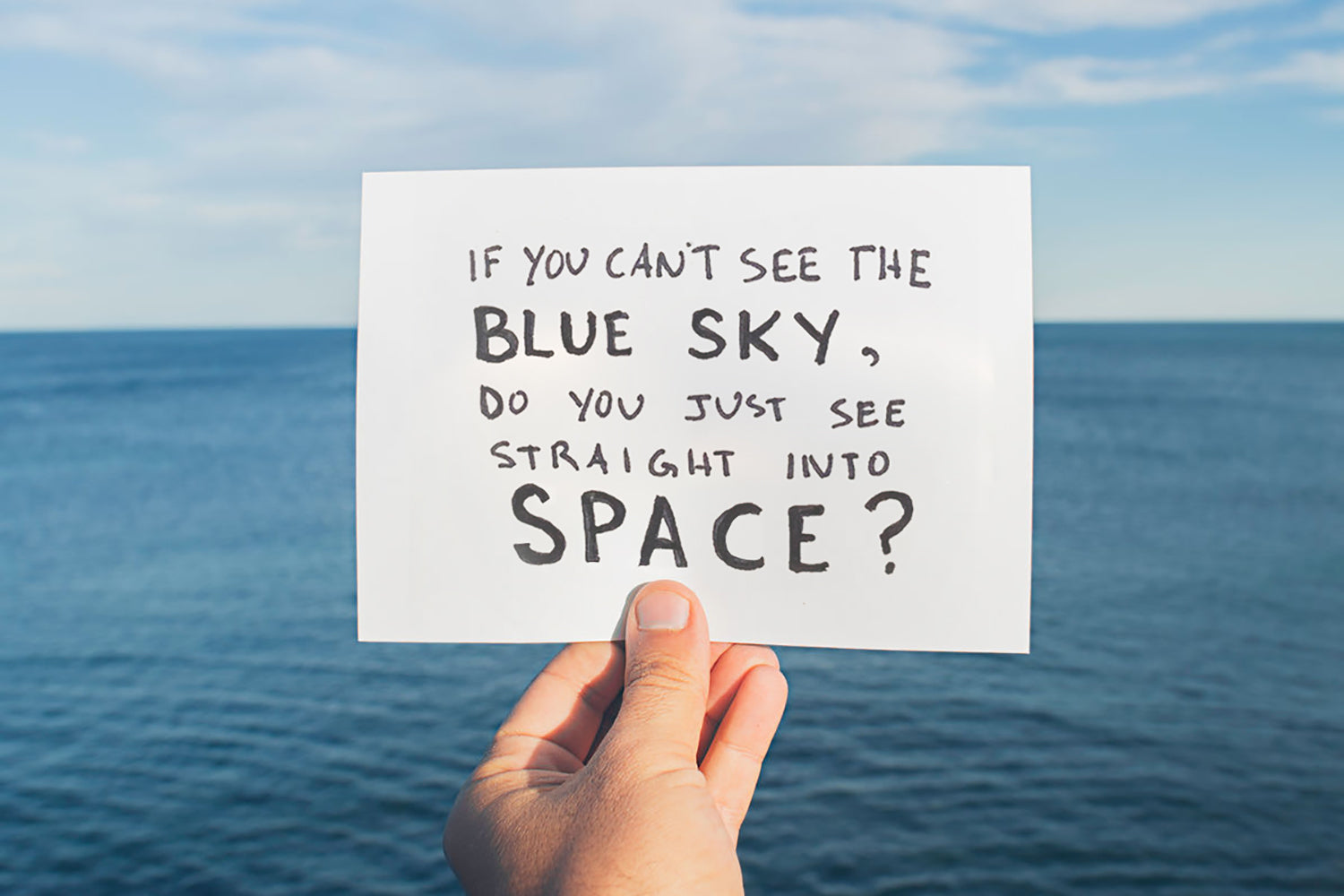Sometimes color vision deficiency (CVD) can be more confusing to those who are not familiar with it than to those who have lived with it all of their lives. For instance, the term “color blindness” can lead some to believe that people with CVD can only see in black and white. We surveyed our EnChroma color blind community on Instagram, Facebook, and Twitter to learn what strange and crazy questions about color blindness that they have been asked over time.
As a red-green color blind person myself, I’ve heard my fair share of questions about the way I see the world, some have been quite surprising, to say the least! Here are some of the more interesting questions people have been asked about the impact of living with color blindness:
What Do Color Blind People See?
What do people with color vision deficiency really see? There are lots of answers! Based on the questions about color blindness we received from our color blind community, some people seem to believe it might even be better than having normal color vision. For example, the US military actually identified color blind individuals to help them defeat camouflage when surveying the battlefield from the air thanks to a learned ability to more effectively detect patterns. However, in almost all other cases, the drawbacks outweigh the benefits. Shade confusion, color identification issues, and other everyday struggles are common for those who are color blind. Despite the obvious cons and scarce pros of color blindness, people still want to know how we see the world. Color blindness may not give you x-ray vision, nor enhanced vision at all, but it won’t stop the questions!

Not As Simple As Black & White
It’s a somewhat common misconception that all color blind people see the world in only black and white as if it were a grainy, old-timey movie. While this is not the case, complete color blindness does exist! It’s called achromatopsia and is one of the rarest forms of color blindness. The most common form is red-green color blindness, also known as protanomaly or deuteranomaly. Individuals with these conditions can still see color, however, many colors become muddled and easily confused when certain shades blend together. So, while color blindness does limit the amount of color one can see, it’s far from an old west style cowboy movie!
Here are some of the other questions about color blindness readers shared:

Learn more about the different Types of Color Blindness.
Red Light, Green Light: Can Color Blind People Drive?

What IS Color Blindness?
For many, the whole concept of color blindness can be challenging to fully comprehend. Given the many types of color blindness and their definitions, many people can confuse their understanding of the condition. Whether it comes from the condition’s confusing name or never having learned the way color deficient people see, some very interesting questions about color blindness can come up. And when we say interesting, we mean interesting.

Color Blindness Genetics: Can Women Be Color Blind?
What Color Is This? I’ve Heard This One Before...
Perhaps one of the more frustrating questions about color blindness posed to the color deficient community is, “What color is this?” It’s just like the question I used to hear on the playground: “Is your red my red?” We all want to know if what we see is different than what our friends see. While there is no way to determine exactly how another person sees, we do know that the typical colors are skewed when one is color blind and can at least explain how normal color vision is different. Based on the feedback we received, if you want to know more about someone’s color blindness, we do not recommend starting with “what color is this?”
Read more about What Color Blind People See.
Demystifying the World of Color Vision Deficiency
At EnChroma, it’s our goal to help those with color blindness unlock their color vision. We also strive to help demystify the world of color vision deficiency for those who may not fully understand it. While the odd questions can be entertaining, we encourage the curiosity. Asking and answering questions helps to spread knowledge about this surprisingly common condition that may affect more people than you know. So, the next time someone asks you something about your color vision, send them our way. We’d be happy to answer any questions they have, no matter how strange.
Curious about color blindness? Check out some of our previous blog entries to get started!
What Do Color Blind People See?
Sometimes color vision deficiency (CVD) can be more confusing to those who are not familiar with it than to those who have lived with it all of their lives. For instance, the term “color blindness” can lead some to believe that people with CVD can only see in black and white. We surveyed our EnChroma color blind community on Instagram, Facebook, and Twitter to learn what strange and crazy questions they have been asked over time.
As a red-green color blind person myself, I’ve heard my fair share of questions about the way I see the world, some have been quite surprising, to say the least! Here are some of the more interesting questions people have been asked about the impact of living with color blindness:
What Do Color Blind People See?
What do people with color vision deficiency really see? There are lots of answers! Based on the questions we received from our color blind community, some people seem to believe it might even be better than having normal color vision. For example, the US military actually identified color blind individuals to help them defeat camouflage when surveying the battlefield from the air thanks to a learned ability to more effectively detect patterns. However, in almost all other cases, the drawbacks outweigh the benefits. Shade confusion, color identification issues, and other everyday struggles are common for those who are color blind. Despite the obvious cons and scarce pros of color blindness, people still want to know how we see the world. Color blindness may not give you x-ray vision, nor enhanced vision at all, but it won’t stop the questions!

Not As Simple As Black & White
It’s a somewhat common misconception that all color blind people see the world in only black and white as if it were a grainy, old-timey movie. While this is not the case, complete color blindness does exist! It’s called achromatopsia and is one of the rarest forms of color blindness. The most common form is red-green color blindness, also known as protanomaly or deuteranomaly. Individuals with these conditions can still see color, however, many colors become muddled and easily confused when certain shades blend together. So, while color blindness does limit the amount of color one can see, it’s far from an old west style cowboy movie! Here are some of the other questions readers shared:

Learn more about the different Types of Color Blindness.
Red Light, Green Light: Can Color Blind People Drive?
Some are convinced that a color blind person might struggle when driving. It’s true, people with color blindness are barred from getting their driver’s license in some countries like Romania, but it’s not common. For some, the green light may look white, for others the red and yellow lights might look more similar than they would to a person with normal color vision. Also, certain street signs may blend into their surroundings as well, causing potential issues. Typically, color blind people learn to adapt to their surroundings when learning to drive. Memorizing the positions of the red, yellow, and green lights makes it easy to determine when to stop and when to go, even in foreign countries. Many also look for the text of a sign, rather than its color (i.e. a STOP sign) for navigation. Thanks to the nearly universal placement of traffic lights and road signs, most color blind people can drive just as well as those with normal color vision.

What IS Color Blindness?
For many, the whole concept of color blindness can be challenging to fully comprehend. Given the many types of color blindness and their definitions, many people can confuse their understanding of the condition. Whether it comes from the condition’s confusing name or never having learned the way color deficient people see, some very interesting questions about color blindness can come up. And when we say interesting, we mean interesting.

Color Blindness Genetics: Can Women Be Color Blind?
It may be surprising to hear that women CAN be color blind! While it’s rare (only about 1 in 200 women has the condition), it’s very possible. Color blindness is inherited on the X chromosome; men have only one while women have two. The gene must be present on both X chromosomes for a woman to be color blind, therefore making it far rarer than in men, who would only have to have the gene present on one X chromosome. Due to its rarity, you might run into some “experts” who try to convince you that female color blindness does not exist. Next time someone tries to tell you otherwise, send them our way and we can give them some facts!
What Color Is This? I’ve Heard This One Before...
Perhaps one of the more frustrating questions posed to the color deficient community is, “What color is this?” It’s just like the question I used to hear on the playground: “Is your red my red?” We all want to know if what we see is different than what our friends see. While there is no way to determine exactly how another person sees, we do know that the typical colors are skewed when one is color blind and can at least explain how normal color vision is different. Based on the feedback we received, if you want to know more about someone’s color blindness, we do not recommend starting with “what color is this?”
Read more about What Color Blind People See.
Demystifying the World of Color Vision Deficiency
At EnChroma, it’s our goal to help those with color blindness unlock their color vision. We also strive to help demystify the world of color vision deficiency for those who may not fully understand it. While the odd questions can be entertaining, we encourage the curiosity. Asking and answering questions helps to spread knowledge about this surprisingly common condition that may affect more people than you know. So, the next time someone asks you something about your color vision, send them our way. We’d be happy to answer any questions they have, no matter how strange.
Curious about color blindness? Check out some of our previous blog entries to get started!
What Do Color Blind People See?
Share your story and join the #EnChroma community!




